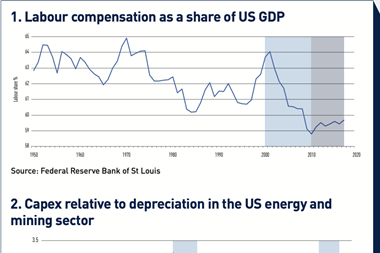The Pensions Policy Institute’s (PPI) latest report looks at what the UK can learn from other countries to improve value for money for pension savers. Such contries, among others, include Sweden, Australia and the Netherlands.
When Sweden introduced its defined contribution (DC)-based premium pension system in the 1990s, it launched a campaign to encourage workers to make an active, considerate choice between the six available investment funds.
With remarkable success, as two thirds of workers did indeed make an active choice in 2000/01, the first years the new system was running. But with the withdrawal of the campaign, the share of active choice quickly fell to 10%. Now, just 1% of new pension savers make a considerate choice for an investment fund.
“This suggests that effort needs to be both concerted and continuous,” the PPI concluded. As this would be costly and time-consuming, it’s not sure this would be a preferrable option, the research institute added.
This makes the existence of a good default option all the more important. And the Swedish default option, the AP7 fund, passes the litmus test, according to PPI.
With its high equity allocation (65% to global equities, 20% to Swedish equites and 10% to emerging market equities) the fund looks like an unusually high-risk option for a default fund at first sight but, noted PPI, this should be seen in its context: contributions to the fund are only just under 14% of the total notional contributions of an individual to their national pension.
The remaining 86%, forming their income pension, creates a pension entitlement financed on a pay-as-you-go basis, creating a low-risk, bond-like asset.
That said, AP7 also delivers great value for money compared to comparable investment options, PPI concluded. From inception in 2000 to end 2020, AP7 had returned 292% compared to an average 131% for the marketplace, at a cost charge of only 0.17%.
Punish the laggards
When the Australian Productivity Commission (APC) investigated the quality of the country’s pension funds, it concluded in its final report at the end of 2018 that while some Australian super funds achieved consistent high net returns, total performance was mixed with a significant number of funds underperforming.
This was even the case after adjusting for differences in investment strategy. While reported fees had trended downwards, a tail of high-fee products also remained, mostly in retail funds.
According to APC’s research, commercial retail funds underperformed not-for-profit ones by 2% a year, mainly because of high fees.
The APC then recommended funds should earn the ‘right to remain’ in the system using benchmark outcome tests, and members should be empowered to choose their own fund from a ‘best in show’ shortlist, set by a competitive and independent process.
A focus on benchmarking against tailored benchmark portfolios and median fees with material sanctions on funds falling below a tolerance, as the APC did, “sends a very strong signal to providers and governance as to what is expected by the system”.
This system also comes with risks though, according to the PPI. “The stated aim to address the ‘long tail’ of poorly performing funds may well be achieved but could also result in a reversion to median as providers are likely to first seek to minimise the chance of failing the performance test, rather than deliver maximum risk-weighted returns appropriate to their members,” it said.
Additionally, there could “be a risk that undue weight is placed on gaming the performance tests rather than optimising investment strategy, and so restricting further value-for-money improvements.”
Consolidation is not a panacea
It is often thought that consolidation of pension schemes leads to large reductions in costs. When UK pensions minister Guy Oppermann stated recently that “there is no doubt in my mind that there must be further consolidation in the occupational DC pensions market”, he suggested “scale is the biggest driver in achieving value for money for savers and ultimately better retirement outcomes.”
But evidence from the Netherlands suggests otherwise. Earlier this year, two scholars affiliated to pension regulator De Nederlandsche Bank (DNB) concluded that the economies of scale that had driven the consolidation of Dutch pension funds from the 1990s, had all but disappeared.
While larger funds paid significantly lower investment management fees than smaller ones until around 2004, the effects of economies of scale have now become negligible. IPE reported on the regulator’s conclusions in May.
“Today, scale hardly produces cost efficiencies for pension funds,” said Jaap Bikker, a retired professor at Utrecht University and a guest researcher at pension regulator DNB, and Jeroen Meringa, a company analyst at the regulator.
Bikker and Meringa calculated that, if all smaller pension funds were to merge to obtain a similar size as the fifth-largest pension fund, investment management costs would drop by 2.4%, or €64m.
“This is 0.8% of total investment management costs. As such, potential cost savings of this magnitude do not carry enough weight to serve as a reason for pension fund consolidation,” they argued. “With this, an important reason for further consolidation and upscaling has disappeared.”
You can read PPI’s report here.










No comments yet